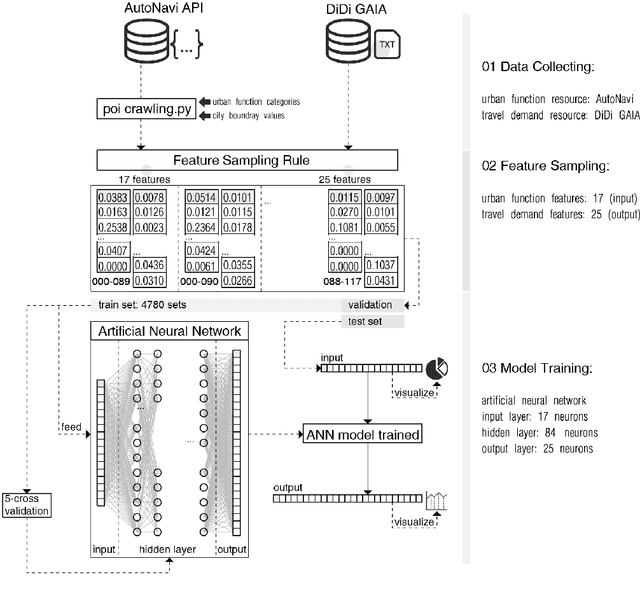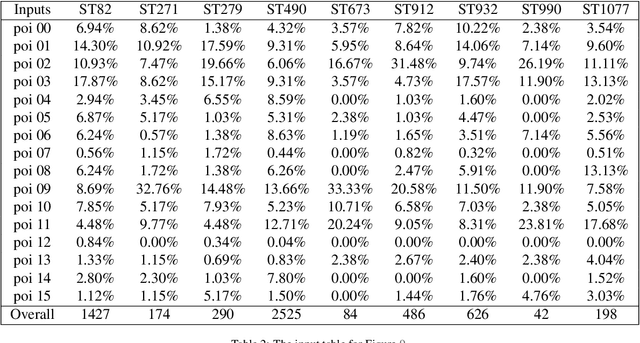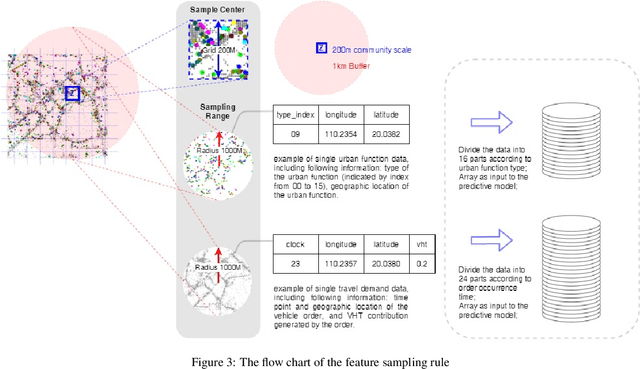Can Machine Learning Uncover Insights into Vehicle Travel Demand from Our Built Environment?
Paper and Code
Nov 10, 2023



In this paper, we propose a machine learning-based approach to address the lack of ability for designers to optimize urban land use planning from the perspective of vehicle travel demand. Research shows that our computational model can help designers quickly obtain feedback on the vehicle travel demand, which includes its total amount and temporal distribution based on the urban function distribution designed by the designers. It also assists in design optimization and evaluation of the urban function distribution from the perspective of vehicle travel. We obtain the city function distribution information and vehicle hours traveled (VHT) information by collecting the city point-of-interest (POI) data and online vehicle data. The artificial neural networks (ANNs) with the best performance in prediction are selected. By using data sets collected in different regions for mutual prediction and remapping the predictions onto a map for visualization, we evaluate the extent to which the computational model sees use across regions in an attempt to reduce the workload of future urban researchers. Finally, we demonstrate the application of the computational model to help designers obtain feedback on vehicle travel demand in the built environment and combine it with genetic algorithms to optimize the current state of the urban environment to provide recommendations to designers.
 Add to Chrome
Add to Chrome Add to Firefox
Add to Firefox Add to Edge
Add to Edge